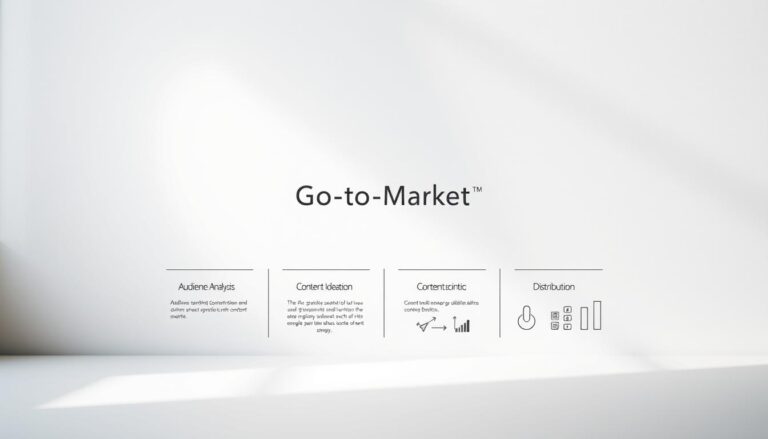In today’s complex business world, risk management software solutions are essential. They help keep operations safe and efficient. Companies all over the world use these advanced platforms. They strengthen their risk management approaches. Cority is a leader in this field. Its enterprise risk management software makes processes smoother. It also gives a clear view of possible risks in real time.
By using a top-notch risk analytics platform, firms can turn data into insights. This greatly improves how decisions are made.
Cority’s platform works well with IoT devices and mobile tech. This keeps businesses ahead in operational risk management software. It’s a key factor in following rules and managing risks accurately. Cority’s software reduces manual data work, lowers remaining risks, and boosts ROI on preventing risks. The myCority mobile app and advanced tools are great examples of innovation. They help assess and control risks in real time.
Key Takeaways
- Cority’s solutions excel in enhancing operational efficiency by automating and unifying risk management processes across different platforms.
- Detailed analytics provided by Cority’s software enable comprehensive risk tracking and mitigation strategy assessment.
- Increased risk visibility, through sophisticated reporting and dashboards, helps organizations measure the impact of their risk management controls.
- The myCority mobile app facilitates timely updates and dynamic risk control in various operational environments.
- Automation of business processes fosters an integrated approach to managing environmental, health, safety, and quality risks.
- Cority’s commitment to security is underlined by multiple ISO certifications and recognition from independent analysts for its robust security stance.
- Through IoT and IIoT integration, Cority aids connected workers, enhancing decision-making and data aggregation from one central platform.
Understanding Risk Management Software Solutions
In today’s fast-paced and uncertain business world, using risk management system solutions is vital. These software solutions help companies protect themselves and make better decisions.
What is Risk Management Software?
Risk management software streamlines identifying, assessing, and mitigating risks. It prepares management to counter potential threats effectively. This risk assessment software automates key processes and offers real-time insights.
Key Features of Risk Management Software
The core features of software solutions for risk management ensure smooth operations. They provide detailed risk analysis, efficient data consolidation, and clear reporting tools. Mobile integration is also common, letting teams respond quickly from any location.
Explore personalized software solutions for your risk management needs. Learn how customizing these tools can lead to better results.
Benefits of Implementing Software Solutions
Investing in risk management software has many benefits. It prepares organizations for potential risks, leading to a strong risk mitigation strategy. This software cuts costs related to risk losses and ensures regulatory compliance, adding value to business goals.
Data indicates a rise in software solutions for risk management spending from $185 billion in 2023 to $287 billion by 2027. These figures highlight the growing importance of these tools in business strategies. Technology plays a crucial role in managing risks effectively.
Further supporting this, 86% of surveyed companies use some risk management tactics. This widespread use shows the value and impact of these systems. Risk management software not only protects but also empowers companies in today’s uncertain global market.
Types of Risk Management Software Solutions
Today’s businesses face many risks, big or small, that could slow them down. Using risk management software is key to dealing with these issues. These tools give insights and help take steps to avoid dangers.
Enterprise Risk Management (ERM) Tools
Companies need enterprise risk management software to handle risks in all departments. It helps in making big decisions by looking at all risks. This software helps focus resources on major risks to business goals.
Regulatory Compliance Software
For highly regulated industries, compliance software is essential. It helps businesses follow legal rules and avoid problems. This software keeps companies in good standing by preventing legal issues.
Operational Risk Management Solutions
These tools, like Cority, identify and reduce operational risks. They address both environmental and operational dangers in one place. This helps in making fast, informed decisions for better safety and efficiency.

Understanding these tools can make businesses stronger. They improve compliance and prepare for risks. This tech helps manage risks better and more accurately.
### Comparative Table of Enterprise Risk Management Solutions
| Feature | ERM Tools | Compliance Software | Operational Risk Solutions |
|---|---|---|---|
| Core Focus | Risk Integration Across Departments | Regulatory Adherence | Operational and EHS Risk Management |
| Key Benefit | Strategic Decision Support | Legal Challenge Prevention | Data-Driven Decision Making |
| Typical Users | Large Enterprises | Industries like Healthcare, Finance | Organizations with Significant Operational Risks |
| Pricing Model | Varies from $10 to over $100 per user/month | Feature-Based Pricing | Custom Pricing for Tailored Features |
Selecting the right technology helps businesses face challenges. It matches solutions with their specific needs, making them stronger against threats.
Choosing the Right Software for Your Organization
Choosing the right software solutions for risk management is crucial for your company. It’s not just buying a tool. It’s about finding a system that fits your unique needs and goals.
Evaluating Your Organization’s Needs
First, understand the specific challenges and risks your company faces. You might deal with financial risks, operational issues, or cybersecurity threats. The right system should address these problems well. It ensures your company is fully protected.
Comparing Software Features and Pricing
Looking into risk analytics platforms means checking out lots of features. Consider things like risk logging, ease of use, and how it works with your current systems. There’s also price to think about. You want something that fits your budget and meets your needs.
Reading Customer Reviews and Case Studies
Real-world feedback, like customer reviews and case studies, helps a lot. They show how similar companies benefited from a system. This can point out the good and the bad, helping you choose wisely.
| Feature | Importance | Example Platforms |
|---|---|---|
| Integration Capabilities | Critical for existing IT ecosystems | Platforms offering robust API integrations |
| Customization | Essential for unique organizational needs | Systems allowing modular feature selection |
| Data Protection | Mandatory for compliance and security | Software with advanced encryption standards |
| Real-Time Analytics | Important for immediate risk response | Platforms that provide live data feeds |
Picking the right risk management system boosts your company in many ways. It doesn’t just reduce risks. It also helps with making better decisions for the company. Keep these critical points in mind for a choice that supports your big goals.
Integration with Existing Systems
Integrating enterprise risk management software is crucial for any organization. It boosts operational resilience and ensures data consistency across platforms. It’s key to check software compatibility early. This ensures the deployment is smooth and the tools work well.
Importance of Software Compatibility
For workflows to run smoothly and get the most from a risk management system, it must fit perfectly with existing IT setups. This fit allows for seamless data flow. It keeps data accurate and supports quick risk management.
Integration Challenges and Solutions
Integrating new software can bring up issues like system differences or compatibility problems. Yet, with well-planned strategies and the right tools, these issues are manageable. For instance, cloud-based tools offer scalable and easy integration options.

Using APIs helps different applications to talk to each other, easing the integration process. It’s important to focus on both the technology and aligning it with the company’s risk strategies.
Here is a table that shows how these tools work in different fields:
| Tool/Technique | Application | Key Benefit |
|---|---|---|
| Probability and Impact Matrix | Risk Assessment | Prioritizes risks based on likelihood and impact |
| Monte Carlo Simulation | Quantitative Analysis | Assesses risk scenarios to predict outcomes |
| Expected Monetary Value Analysis | Financial Risk Assessment | Estimates potential financial outcomes |
| IT Risk Management Tools utilizing AI | IT Sector | Leverages advanced analytics for risk management |
| Cloud-based Collaboration Features | Team Collaboration | Enhances team communication and real-time updates |
This table shows how risk management tools work in various sectors. They play a vital role in improving an organization’s risk profile. This leads to success and staying strong in a competitive market.
Enhancing Safety Through Risk Management Solutions
Risk management solutions play a key role in making workplaces safer. They help find and lessen potential dangers. By using risk assessment and monitoring software, companies can tackle weak spots effectively and systematically.
Having a strong risk analytics platform helps companies improve constantly. This is key for keeping a safe and compliant work environment.
Key benefits of using advanced risk management tools include better compliance with laws, increased employee productivity, and fewer accidents at work. This proves the worth of using such technologies.
Identifying Potential Risks
Identifying possible risks is the first step in managing them well. Platforms like Pulpstream help businesses deeply analyze and spot risks. They offer methods that work across different sectors, making sure every threat is seen and noted in a standard way.
Mitigating Risks in Real-Time
Risk mitigation is essential for quickly managing surprises. Tools like Workhub help businesses react fast with alerts and automated messages. This quick action is crucial to lessen the effects of risks as they happen.
Reporting and Analytics for Continuous Improvement
Good reporting and analysis drive improvement in risk management. Platforms like EHS Insight offer cloud-based safety management, allowing for continuous tracking of safety data. This analysis helps companies see how well their risk management works. It encourages ongoing learning and betterment.
Risk monitoring software is not just for meeting current safety standards. It’s vital for creating better safety plans in the future. Using these platforms saves time and cuts down on errors, compared to old ways of managing risks.
Best Practices for Using Risk Management Software
Understanding fundamental practices is crucial to fully use risk mitigation tools. They ensure operations are safe and help in making strategic decisions.
Training Your Team Effectively
Effective training is key to managing risks successfully. Organizations, such as Fujitsu UK, focus on helping project managers keep growing their skills. This makes sure all team members can use risk management tools well, which is vital for managing risks.
Regular Software Updates and Maintenance
It’s vital to keep your risk management software updated. Updates fix security gaps and add new, helpful features. This helps in following the latest laws better.
Companies like Netguru make sure their Cybersecurity and development teams work closely. They quickly handle security problems. This keeps their risk management tools strong against new threats.
Leveraging Analytics for Decision Making
Using data wisely is crucial in modern risk management. Analytics help businesses be more proactive and reduce losses.
Tools from Cority and Sphera’s ARA help companies like Vodafone deal with difficult project risks. This ensures they meet deadlines and keep projects running smoothly, even when unexpected challenges arise.
Applying these best practices every day helps your business keep improving and meet industry standards. This gives you an advantage in a business world full of risks.
Future Trends in Risk Management Software Solutions
Business landscapes are changing, and so are the ways to protect them. Emerging trends in cognitive technology and artificial intelligence (AI) are changing the risk management software game. These technologies help in making better decisions and use lots of data to improve risk detection and response. AI’s growth in this area suggests risk analytics will soon predict problems before they happen, allowing for proactive threat management.
The Role of Artificial Intelligence in Risk Management
Today, being connected all the time and monitoring data instantly is common. AI plays a key role in managing risks in this setup. Companies are using AI to instantly manage risks, with data from sensors. By combining machine learning with traditional methods, businesses can move beyond just preventing risks. They can be more flexible in handling them. Advances in understanding risk behaviors are improving decision-making in compliance software, too.
Cloud-Based Solutions and Their Advantages
More and more, companies are choosing cloud-based solutions for their flexibility, easy access, and integration. This shift shows that these platforms are becoming essential for data security and storage. The cloud offers cost savings and convenience, becoming crucial in risk management strategies. It helps companies quickly adjust and stay strong against online threats, beyond what old security steps could do.
The Importance of Data Security in Risk Management
In just the first six months of 2020, data breaches affected over 163 million people, highlighting how critical data security is. Companies like Cority are maintaining tight security to manage risks. There were fewer data breaches in 2020 than the year before, showing better risk handling and stronger security steps. Using Data Security Governance Frameworks, Third-Party Security Operations Centers, and Multi-factor Authentication shows a strong commitment to fighting cyber risks. Looking ahead, risk management will focus on innovative strategies, shared risk handling, and preparing for disruptions.
FAQ
What is Risk Management Software?
Risk management software helps organizations deal with risks. It identifies, evaluates, monitors, and reduces risks. With this software, making good decisions gets easier, and operations become more efficient.
What are the Key Features of Risk Management Software?
Important features include tools for identifying and assessing risks, and for monitoring them in real-time. There are also features for tracking compliance, customizable alerts and reports, analytics, and mobile apps for risk assessment anywhere.
What are the Benefits of Implementing Software Solutions for Risk Management?
Using risk management software makes things more efficient and reduces errors from manual data entry. It helps companies see risks better, comply with laws, and make smarter decisions using risk analysis.
What are Enterprise Risk Management (ERM) Tools?
ERM tools are software designed to help manage risks across a business. They provide a way to deal with risks systematically and bring them together at the enterprise level.
Why is Regulatory Compliance Software Important?
It’s important because it ensures companies follow laws and regulations. This helps avoid fines and damage to their reputation.
What are Operational Risk Management Solutions?
These solutions help businesses manage risks from daily operations. They track incidents, manage safety, and make sure health and safety rules are followed.
How Should an Organization Evaluate Its Needs When Selecting Risk Management Software?
Companies should first figure out what they need in terms of risk management. This includes the type of risks, compliance needs, and how complex their operations are. They should also think about their budget and what they hope to improve with the software.
Why is Comparing Software Features and Pricing Important?
Comparison helps find the best value. It ensures a company gets what it needs without paying extra for things it doesn’t.
How Can Reading Customer Reviews and Case Studies Help in the Decision-Making Process?
Reviews and case studies offer insights into how software works in real situations. They show the good and bad parts, and how it affects risk management and compliance from a user’s view.
What is the Importance of Software Compatibility?
Compatibility is key for integrating new software with current systems without issues. It helps keep data safe, reduce disruptions during the change, and use what technology the company already has.
How Can Organizations Overcome Integration Challenges?
To deal with integration problems, choose software that is flexible, like those with API capabilities. Working with experienced vendors who offer good support is also a big help.
How Does Risk Management Software Identify Potential Risks?
The software uses set frameworks to find and rate risks. It looks at past data to foresee hazards and lets employees report risks right away.
What is the Role of Real-Time Risk Mitigation?
Real-time mitigation allows for quick reactions to new dangers. This includes moving resources fast, changing operations, and telling stakeholders what’s happening.
How Do Reporting and Analytics Tools Contribute to Continuous Safety Improvement?
These tools give important insights, show safety trends, and help find patterns in incidents. This helps make safety better over time.
What are Some Best Practices for Training Your Team on New Risk Management Software?
Good practices include creating detailed training for different roles, using the software provider’s training, practicing hands-on, and keeping learning ongoing with updates.
Why are Regular Software Updates and Maintenance Essential?
Updates and maintenance keep the software safe from new threats, ensure it meets new laws, and improve its features for better risk management.
How Can Analytics Be Leveraged for Enhanced Decision-Making in Risk Management?
Use analytics to make smart choices, see trends in risks, and create models to prevent incidents and lower risk.
What is the Future Role of Artificial Intelligence in Risk Management?
Artificial intelligence will change risk management by automating detection, improving analytics, and offering better tools for dealing with risk smartly.
What Advantages Do Cloud-Based Risk Management Solutions Offer?
Cloud solutions are scalable, flexible, and easy to access. They’re cost-effective and simply integrate with other cloud systems.
Why is Data Security Paramount in Risk Management Software Solutions?
It’s crucial because this software handles sensitive info. Secure solutions protect against financial loss, legal issues, and harm to reputation.



